
The Ford Köln is an automobile that was produced by Ford Germany from 1933 until 1936 at its Cologne plant.

The Ford Eifel is a car manufactured by Ford Germany between 1935 and 1940. It initially complemented and then replaced the Ford Köln. It was itself replaced by the Ford Taunus.

Initially presented early in 1933, the Audi Front UW 220 was Europe’s first car to combine front-wheel drive with a six-cylinder engine. It remained in production for slightly under two years before being replaced by the Audi Front UW 225 featuring a larger 2.25-litre engine. The larger-engined car introduced in 1935 was built till April 1938 and continued to be listed into 1939. Between 1933 and 1938, the Front was the only Audi in volume production.

The Audi Type C was introduced in 1912. It became popular with the German people and Army, being brought back into production for a couple of years after the war. Its performance, handling and reliability along with rally successes greatly raised Audi's profile, and the Type C was a commercial success. 1,116 cars were produced.
The 2 Litre Brennabor Typ E is a car manufactured, briefly, by Brennabor in 1933 as a successor to the company's Typ B “Juwel 6.

The Mercedes-Benz 380 is an eight-cylinder powered automobile introduced by the German manufacturer Mercedes-Benz at the Berlin Motor Show in February 1933. It was withdrawn from production during 1934. Several models with similar names were produced by Mercedes-Benz during the 1930s, so that in retrospect the car is frequently identified using the manufacturer's Works Number as the W22.
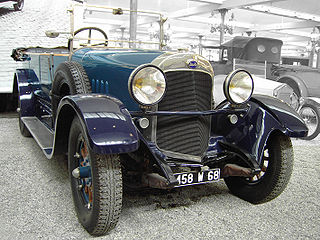
The Audi Type E was a passenger car introduced by Audi in 1913. It was the largest pre-war car from Audi.
The Audi Type G is a passenger car produced by Audi between 1914 and 1923. It is Audi's smallest and least powerful pre-war car.
The Audi Type K was a car introduced by Audi at the Berlin Motor Show in September 1921. Since the end of the war Audi had till now produced only cars of pre-war design, so that the Type K was the first post-war Audi design to be offered. The Type K entered production in 1922 and was withdrawn in 1925, by which time the company had commenced production, in 1924, their Type M model which can be seen as a larger replacement for the Type K. The Audi Type K was the first volume produced car in Germany to feature left-hand drive.
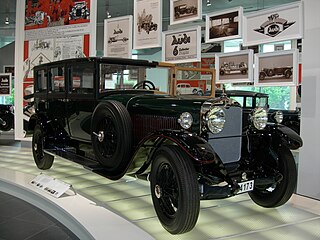
The Audi Type M was a large, well constructed, reliable, fast and very expensive car first presented at the Berlin Motor Show in 1923 and produced by Audi between 1924 and 1927.

The Audi Type R was a large, well-constructed, reliable, fast and expensive car produced by Audi between 1928 and 1932 as a successor to the Audi Type M.

The Audi Type SS was a large, eight-cylinder-powered sedan/saloon car introduced by Audi in 1929 in succession to the Type R "Imperator".
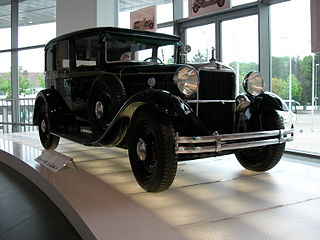
The Audi Type T was a large, 6-cylinder-powered sedan/saloon car introduced by Audi in 1931. It was in most respects a scaled-down version of the manufacturer's Type SS "Zwickau", which had appeared two years earlier.
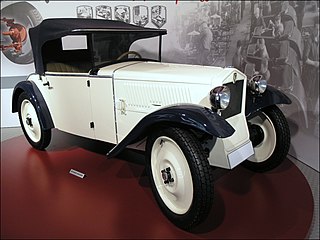
The DKW F1 was a small car produced by DKW between 1931 and 1932. It was launched at the Berlin Motor Show in February 1931.

The DKW F2 was a small car produced at the company’s Zwickau plant by DKW between 1932 and 1935. Launched at the Berlin Motor Show in April 1932, it shared its 584cc engine and front wheel drive configuration with its predecessor, but came with a longer wheelbase and a larger body.

The DKW F4 Meisterklasse was a small car produced at the company’s Zwickau plant by DKW between 1934 and 1935. It shared its 692cc engine and front wheel drive configuration with its immediate predecessor, the DKW F2 Meisterklasse, along with its 2,610 mm (103 in) wheelbase, but the body had been restyled again, and was now more stylish, the perpendicular rear end of the F2 now replaced with a sloping rear on the mainstream body types
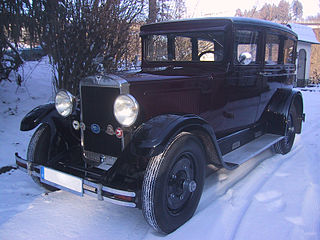
The Adler Favorit was a passenger car introduced early in 1929 by the Frankfurt auto-maker, Adler. It was a substantial six cylinder “limousine” (saloon) closely modelled on the manufacturer’s Standard 6 which had first appeared in public in October 1926. The two models shared the same 2,840 mm (112 in) wheelbase, but the Favorit was powered by a smaller 1,943 cc 4 cylinder engine for which a maximum power output of 35 PS was claimed. For both cars, a range of alternative body styles were available from coach builders.
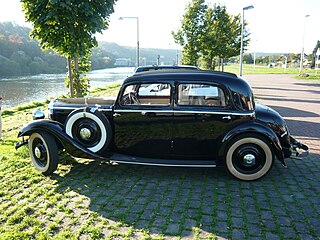
The Mercedes-Benz W 21 was a six-cylinder passenger car launched in 1933 using the name Mercedes-Benz Typ 200. It was one of several Mercedes-Benz models known, in its own time, as the Mercedes-Benz 200 and is therefore in retrospect more commonly referred to using its Mercedes-Benz works number, “W21”.
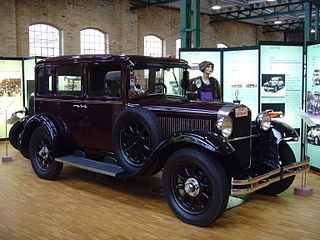
The Mercedes-Benz W11 was a midsize six-cylinder automobile introduced by Daimler-Benz it 1929. It was developed from the Mercedes-Benz W02 first seen in 1926, and the W11 shared its chassis and bodywork with the W02, but the W11 came with a larger more powerful engine, a new name and a wider list of “standard bodies” from which customers could choose.
The Hansa 400 is a microcar made in 1933 to 1934 by Hansa Lloyd and Goliath Company, Borgward & Tecklenborg in Bremen, Germany. After about a year in production, it was replaced by the next model Hansa 500 with a bigger engine.
















